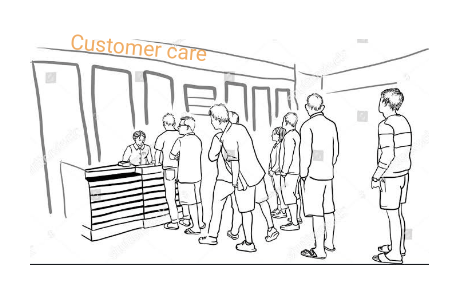
MCQs or Multiple Choice Questions are an integral part of education systems all around the world. Multiple choice questions are generally recognized as the most widely applicable and useful type of objective test questions. A good MCQ question paper can test a person's knowledge, understanding, judgment, and problem-solving skills. A multiple-choice question or MCQ comprises two primary parts, a stem to identify the problem and a set of possible answers. In a good MCQ, these answers contain hints in themselves as to what the best answer may be, but they also act as distractors that are plausible but incorrect answers to the question.
There are several advantages to MCQ assessments, one of the major ones is that they can even be marked by computers. This makes them a desirable assessment approach for extensive tests conducted by major institutions. A well-designed MCQ assessment allows testing for a broad range of content while objectively measuring an individual student's ability. Generally, creating an MCQ follows three main sections, they are effectively the blueprint for creating multiple-choice questions:
- The General Strategy
- Designing the questions
- Designing the options
The General Strategy
A good strategy while creating a multiple-choice question is that the stem or problem statement and its possible answers should not have verbal associations with each other. If the options have similar words to the questions then students will most probably choose the question that seems most similar.
Another important strategy is to use familiar terminology in the question. Unfamiliar expressions in the options might get dismissed by the students and they are likely to mark correct statements as incorrect if this happens. A good MCQ should also avoid trick questions. Questions should be designed in a way that students who know the material are able to identify the correct answer. Misleading phrasing will lead students to the wrong answer violating an important principle of avoiding trick or misleading questions.
Another important, but often violated principle of MCQ creation is that negative wording should be avoided in a question stem. Many students will often fail to observe negative wording because it simply confuses them. It is better to avoid negative phrasing but in the rare cases where it is necessary, negative phrasing should be emphasized by putting them in upper case and bolding or underlining them. Take the following example:
Which of the following is NOT an extension of an image file?
- .mkv
- .jpg
- .txt
- .vdf
In this example, the use of negative phrasing creates unnecessary confusion that can be very easily avoided if you choose to create a simple-looking but tricky question rather than a confusing question.
An unrelated but useful hint to solving MCQ questions is to instruct students to look for the best answer rather than the correct answer to any question.
Designing the questions
Designing the question properly is the most important part of generating assessments, obviously. In a question, the entire problem has to be properly expressed and all its relevant material must be put into it. This makes it easier to read and understand so students can quickly answer them.
It's also important to eliminate any sort of excessive wording and the inclusion of irrelevant information in the question. It must be straight to the point or the assessment may not be effective in measuring a student's capabilities. A good example of a question with a simple and well-designed stem/question is as follows:
Computer word size is a multiple of how many bits?
- 4 bits
- 10 bits
- 16 bits
- 1024 bits
The stem for this question is straight to the point and gives precise instructions for what the answer can be.
Designing the options
First of all, a teacher should limit the number of options presented in a multiple-choice question. A good limit is between 3 to 5 options per question. Anything more and the question will quickly run out of or have more than necessary, "plausible distractors". Another good tip in the blueprint for creating an effective MCQ is that there should only be one best answer to it. More than one correct answer can obviously create great problems for students and examiners.
Though there has to be one correct answer, this doesn't mean that the other options can not be appealing or that they shouldn't qualify as correct answers in the eyes of students. This way it is harder to locate the correct answer and students can be properly tested.
You can look at the following MCQ example to check what sort of options act as good "plausible distractors" in a question.
Computer memory is measured in which terms?
- Units
- Bits
- Cells
- Bytes
In the above-given question, there is only one right answer but there are other options that could logically be the right answers.
The new era of assessment designing
It can be a difficult task to create an effective assessment that tests students properly. Even an extremely experienced professor can sometimes make mistakes. And it is always time-consuming and difficult to create a great assessment that tests a student's capabilities. And in this modern age, everything is shifting into a more advanced and interactive method of teaching. There are platforms for creating quizzes online from anything like flashcards or interactive games like Quizlet and Kahoot just to name a few.
But what popular platforms like Quizlet and Kahoot do not provide is a method for students and teachers to automatically generate assessments. Even now effective assessments have to be generated manually. They may be conducted effectively on these platforms but they have to be manually generated.

Questgen has a solution to this problem, in the form of an intelligent self-learning assessment generation platform where you insert a simple article and the tool generates effective multiple-choice questions, true or false questions, and even short-form questions from scratch. Afterward, you can tweak these questions as you please and export them to use as assessments in examinations. Click here to check out how Questgen works.






